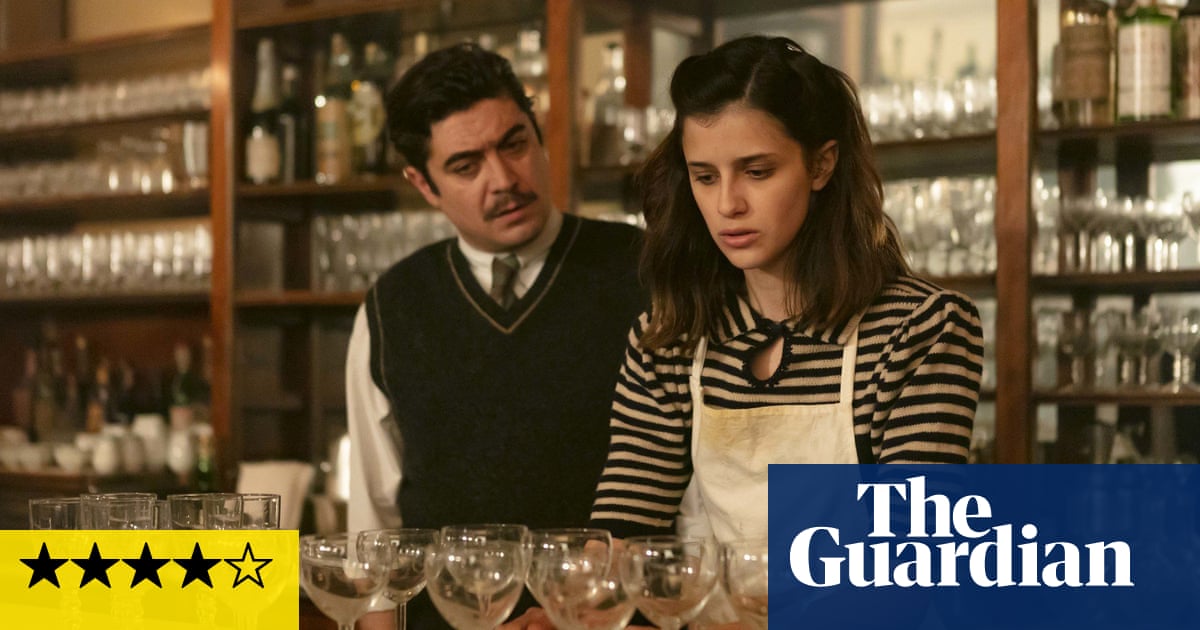
etflix’s new food travelogue series, the four-part High on the Hog, will make you ravenous in every way. For the culinary delights with which it is stuffed to bursting, for its nuanced intelligence, its joy, its pace; for the expertise of its presenter, the chef, food writer and former sommelier Stephen Satterfield, for his extraordinarily ego-free warmth; and, most of all, for its profound difference in spirit and content from almost everything that has gone before.
High on the Hog is adapted from a 2011 book of the same name by the historian and author of numerous specialist cookbooks about African American cuisines, Jessica B Harris. It traces the influence and endurance of African food and cooking traditions on the US as it journeyed with the people, including Satterfield’s ancestors, trafficked and enslaved from one continent to another. The programme’s producers, Fabienne Toback and Karis Jagger, came across Harris’s book when they were looking, in the wake of the 2014 police killing of Michael Brown Jr in Ferguson, for material more personally meaningful to them. The project has been brought to fruition by the all-Black creative team. It steps outside the traditional approach to documenting a subject, which is to flatten it – at best – into the story of distinctly southern US dishes or of soul food, and gives us something deeper, wider, wiser and more flavourful.
Satterfield begins in Benin, west Africa, which was one of the busiest ports during the transatlantic slave trade, and from whose shores hundreds upon thousands of captured west- and central-African people were taken from homes, never to return.
Its history unfolds around Satterfield as Harris takes him round the local market in Dantokpa, noting the okra “which made the voyage with us”. In the next episode, the culinary historian Michael W Twitty cooks it in a soup over a fire by a slave cabin in South Carolina. He fuses past and present in its flames: real yams (what Americans call yams are sweet potatoes – cultivated as a substitute when it emerged that yams would not grow in the US), watermelons and black-eyed peas (thought of as quintessentially American – at least by Americans, but in fact another import, along with okra), and different grades of rice. In the South Carolina episode, Satterfield visits Charleston – another slave trading port – and the Gullah Geechee rice belt. The city’s prominence was built in part on the money made from enslaved Africans’ knowledge of how to grow the grain on land unsuitable for tobacco plants.
Back in Benin, and the first episode, Satterfield eats at Saveurs du Benin restaurant, whose owner, Valérie Vinakpon, specialises in traditional meals – those “that tend to disappear”. He visits the island of Ganvié, and hears how it offered sanctuary to people fleeing slave traders. He samples dishes made out of the fish people catch in the channels used like roads, and the local delicacy, councada (“like a Baby Ruth bar”, says Satterfield, sinking his teeth into what looks like gorgeous, soft peanut brittle), sold from boats that form a floating market on the water. He visits the artist Romuald Hazoumè and eats what they term pre-enslavement food – corn, fish and nut dishes, whose preparation has been handed down to generations of local women in a rare unbroken line of knowledge.
Later episodes take viewers to Texas and the Northeastern Trailriders, who keep alive the traditions of the US’s first cowboys – enslaved Black men who were valued for their expertise as the cattle herders they had been in their own countries. Satterfield learns to make “son-of-a-gun stew” out of offal, as they did in the 1800s. He also visits New York to rejoice in the oyster culture there, bequeathed by a son of freed Virginia slaves, Thomas Downing, who transformed oyster bars into a respectable business, worked tirelessly for abolition and died one of the richest men in the city, the day after the Civil Rights Act 1866 became law.
The first episode, however, ends at the Cemetery of Slaves in Benin, which marks the deaths of the thousands who died in captivity before they were loaded on to ships to cross the Atlantic. Harris speaks of the force-feeding that took place when people decided they would rather refuse food than survive. Satterfield – a quiet, undemonstrative man – cries as gently as he can until he thinks the cameras are gone and then sobs unreservedly on to Harris’s shoulder. The intrusion leaves a slightly bitter taste, but it must be set against the glorious, complex, innovative rest, which remains a feast for the mind, heart and soul.











